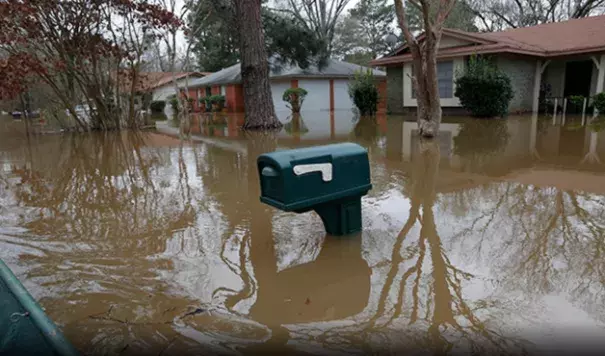It's Already One of the Wettest Winters On Record So Far in Parts of the South, and More Rain Is Ahead This Week

Climate Signals Summary: Climate change is increasing the frequency and intensity of extreme rainfall events because warmer air can hold more moisture.
Article Excerpt: More rain will soak parts of the flood-weary South through Thursday, adding to what has been one of the wettest Februaries and winters to date from Mississippi to the Carolinas.
The first round of rain, associated with an approaching cold front, is already soaking parts of the South and will persist through Wednesday morning before moving off the coast of the Carolinas.
Following that round, jet stream energy riding over a stalled frontal boundary near the Gulf Coast will spread more rain from Texas to the Carolinas and Florida Wednesday through Thursday night, before high pressure sweeps the rain away from most of the Southeast by Friday.
...
Total rainfall through Thursday night is expected to be on the order of an inch or two, with some locally higher amounts possible where bands of rain persist for a few hours.
However, given the ground is saturated and over 130 river gauges are currently reporting flooding in the Southeast, any additional rain will run off into swollen rivers, creeks, streams and reservoirs.
For that reason, the National Weather Service has issued flash flood watches for parts of the South, including Jackson, Mississippi, where the Pearl River crested at its third highest level on record Monday.
...
Tuscaloosa, Alabama, picked up more rain in just the first 17 days of February (11.92 inches) than it measures in an average February and March combined (10.07 inches).
According to the Southeast Regional Climate Center (SERCC), it was the wettest start to the month through Feb. 17 in Knoxville, Tennessee (9.35 inches); Greensboro, North Carolina (5.98 inches); and Elizabeth City, North Carolina (5.83 inches).


